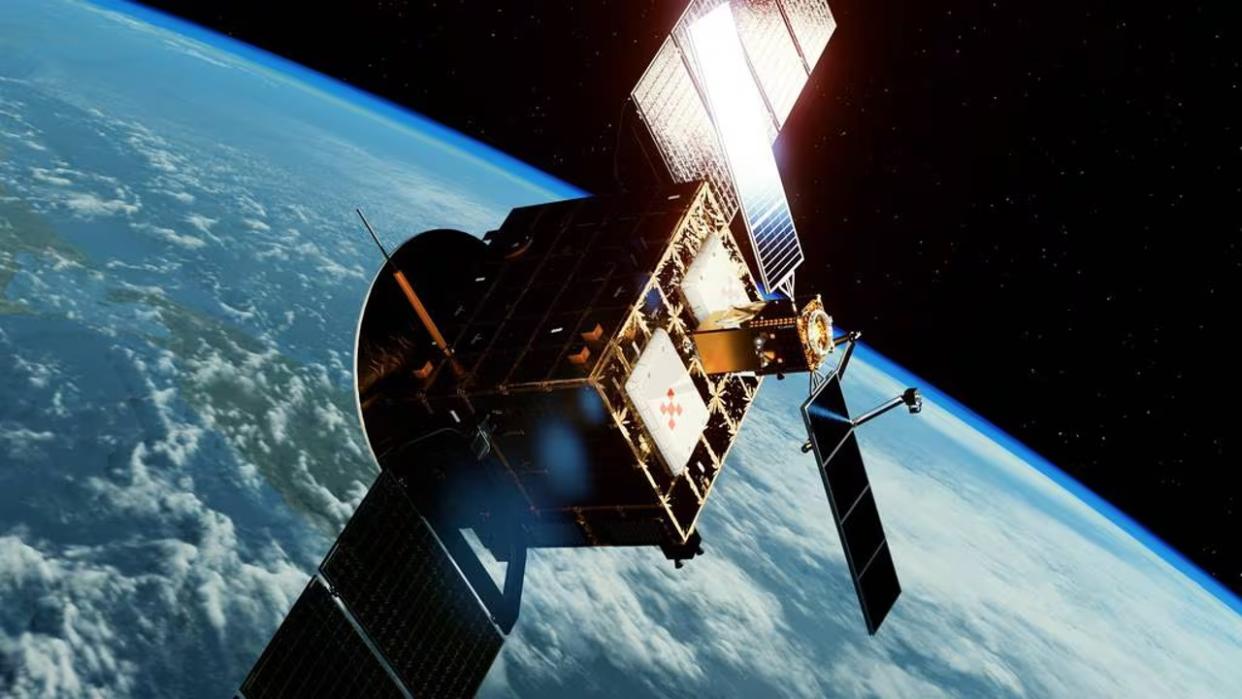Space Force orders 'jetpack' to give 2 years of maneuverability to military satellite

The U.S. Space Force has ordered a first-of-its-kind satellite docking mission in order to give an on-orbit spacecraft an additional two years of propulsion and maneuverability.
Space Systems Command (SSC), an organization within the U.S. Space Force tasked with acquiring and deploying new military space technologies, awarded a $37.5 million contract to Seattle-based company Starfish Space to build and launch one of the firm's "Otter" spacecraft.
Otter's mission is to perform "autonomous rendezvous, proximity operations and docking (RPOD), compatible with a wide range of clients, including those that were never designed or configured for docking," according to an SSC statement. That means the spacecraft will be able to meet up with, and attach itself to, a wide range of satellites, providing additional propulsion to spacecraft even if they weren't designed with such a capability in mind.
Related: US Space Force wants satellite 'jetpacks' to keep old spacecraft alive in orbit
Starfish Space previously demonstrated the technologies behind its Otter spacecraft with its "Otter Pup" mission, which launched aboard SpaceX's Transporter-8 mission in June 2023.
Otter Pup was able to somewhat successfully rendezvous with another spacecraft, coming within 0.6 miles (1 kilometer) of a satellite in May 2024. Otter Pup suffered a propulsion anomaly early in its mission, however, rendering it unable to maneuver closer to its target.
But Starfish Space was able to salvage the mission by providing data to another satellite operator, D-Orbit, that allowed D-Orbit to maneuver its spacecraft close to Otter Pup. Starfish Space was then able to capture images of the other satellite, marking a "successful rendezvous," according to a company statement.
Despite the challenges it experienced, the Otter Pup mission appears to have been enough to convince Space Systems Command to move forward with this new contract with Starfish Space. The command has been looking for technologies that can provide what the Space Force refers to as "augmented maneuver."
"This project is another step forward in delivering what our warfighters require in sustained space maneuver," said SSC's Col. Joyce Bulson in the command's statement. "There is a wide range of applications for Starfish Space's Otter in addition to augmented maneuver, such as station-keeping or life extension, orbital transfer, and ultimately orbital disposal which assures access to key orbital slots while demonstrating responsible norms in space."
On its Otter website, Starfish Space says the spacecraft can "dock with [a] satellite and, like a jetpack, use its own fuel to keep [that] satellite operational in Geostationary orbit."
RELATED STORIES:
— US Space Force's 1st official painting shows military space plane intercepting adversary satellite
— US Space Force wants to track 'abnormal observables' with unknown origins in Earth's orbit
Earlier this year, Space Force leaders stated the need for this type of additional maneuverability. Brig. Gen. Kristin Panzenhagen, Commander of Space Launch Delta 45 on Florida's Space Coast, told reporters at the Space Mobility Conference in Orlando in late January that Space Force is looking to acquire a "backpack or a jetpack that could go connect up with an existing satellite to give it more propulsion," according to Breaking Defense.
Adding additional capabilities to satellites already in orbit has been a focus of U.S. military research and development for years. In January 2024, SSC awarded a contract to Northrop Grumman to launch a Passive Refueling Module, a spacecraft that can dock with and transfer fuel to existing satellites.
And Japan-based company Astroscale was previously awarded a $25.5 million contract by Space Force to develop a satellite-refueling spacecraft that could be launched in 2026.
Starfish Space plans to launch another Otter spacecraft sometime next year.

